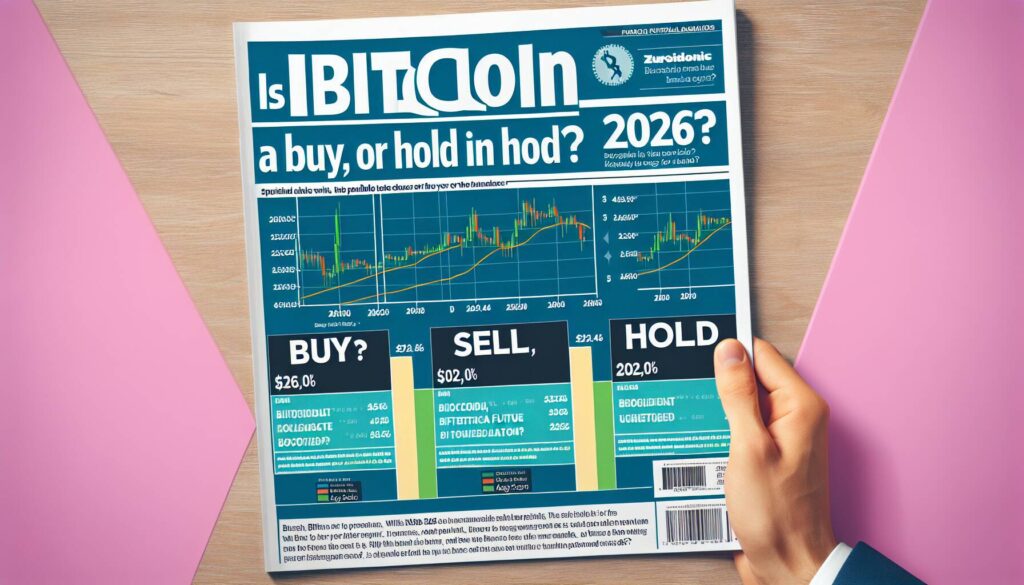New statistical insights are revealing a significant shift in the relationship between bitcoin (BTC) and traditional equity markets, particularly Wall Street. Recent data indicates that the correlation between the implied volatility indices of bitcoin and the S&P 500’s volatility index (VIX) has reached an unprecedented level. According to TradingView, the 90-day correlation coefficient soared to a record high of 0.88, suggesting that bitcoin’s market behavior now closely mirrors that of established stock market trends.
On Wednesday, this correlation was reported at 0.75, highlighting an ongoing intertwining of the cryptocurrency’s volatility with traditional equity market fears. The VIX serves as a barometer of market expectations regarding price fluctuation, illustrating that as this index shows turbulence, so does the assessment of bitcoin’s market strength. As volatility typically declines during bullish market phases and escalates during downturns, BTC’s evolving role as a fear gauge is worth noting.
Interestingly, while bitcoin’s price has surged by 26% this year, its implied volatility—measured by Volmex’s BVIV—has plummeted from approximately 67% to 42%. This divergence marks a significant deviation from historical patterns where BTC and its volatility moved in tandem. Conversely, the VIX has fallen by 11% this year while the S&P 500 has experienced gains exceeding 8%, underscoring a new dynamic that links cryptocurrency closely to conventional financial metrics.
Markus Thielen, founder of 10x Research, attributes this evolution to increasing engagement from institutional investors in the crypto sector. He explains that these participants, often implementing strategies similar to those in traditional equity markets, are influencing the decline of bitcoin’s implied volatility. By selling out-of-the-money calls to enhance yields from their cryptocurrency investments, institutional players are enabling price movements to closely track broader risk sentiments observed in legacy markets.
“This bitcoin cycle continues to be dominated by Wall Street participants, who are actively compressing volatility,” Thielen stated. “Rather than speculating directionally, many institutional players are selling call options to generate additional yield—mirroring traditional equity income strategies.”
As hedge funds and asset managers navigate both asset classes with a unified macroeconomic approach, the correlation between bitcoin and U.S. equities is expected to deepen, marking a transformative era in the cryptocurrency landscape.

Bitcoin’s Correlation with Wall Street Dynamics
Key points highlighting the implications of bitcoin’s evolving relationship with traditional markets:
- High Correlation Coefficient:
- The correlation between bitcoin’s implied volatility and the S&P 500 VIX reached a record high of 0.88.
- This suggests that BTC price movements are increasingly influenced by Wall Street’s market sentiments.
- Volatility Trends:
- BTC implied volatility has dropped from 67% to 42%, while its price has risen by 26%.
- Historically, BTC’s volatility and price moved together, indicating a shift in market dynamics.
- Institutional Impact:
- Growing institutional participation is leading to changes in how BTC is traded and perceived.
- Institutional traders are using strategies similar to traditional equity markets, such as volatility selling.
- Market Sentiment Indicators:
- BTC’s implied volatility indices are becoming “fear gauges,” similar to the VIX.
- This can help investors gauge market sentiment and adjust their trading strategies accordingly.
- Broader Market Dynamics:
- The correlation suggests that BTC now moves in line with risk-on/risk-off dynamics familiar in traditional markets.
- This could impact investment strategies as BTC becomes integrated with broader market trends.
Bitcoin’s Increasing Correlation with Wall Street: A New Era for Crypto
The latest statistical evidence illuminates a fascinating shift in the cryptocurrency landscape, specifically the relationship between bitcoin (BTC) and traditional financial markets, notably Wall Street. The surge in the correlation coefficient between bitcoin’s implied volatility and the S&P 500 VIX indicates that BTC is becoming increasingly intertwined with equity markets. While this development brings certain advantages, it also poses unique challenges for various market players.
Competitive Advantages: For institutional investors, this correlation presents a strategic opportunity. With volatility selling gaining traction among these players, they can generate additional income through options strategies that align with their holdings in both cryptocurrencies and equities. The parallel risk-on/risk-off dynamics familiar to traditional markets provide a clearer framework for trading decisions, allowing seasoned investors to implement well-informed strategies across asset classes. As a result, institutions are not just participants; they are shaping the market’s dynamics akin to their influence in stocks.
Disadvantages: Conversely, this heightened correlation may discourage speculative traders who once thrived on bitcoin’s unpredictable swings. As BTC becomes more aligned with the broader market dynamics, the once-dominant attributes of bitcoin as a hedge against traditional market fluctuations might diminish, potentially limiting its appeal as a non-correlating asset. Additionally, if volatility sellers dominate the narrative, the space may see reduced price movements, leaving traders reliant on traditional equity patterns with less opportunity for significant gains.
This evolving landscape could significantly benefit institutional stakeholders and traders experienced in equity strategies; they stand to gain from the harmonization of trading rules between these asset classes. However, retail investors or traditional crypto enthusiasts may struggle to adapt to this new paradigm, navigating a space that is less about wild speculation and more about calculated risk management.

















